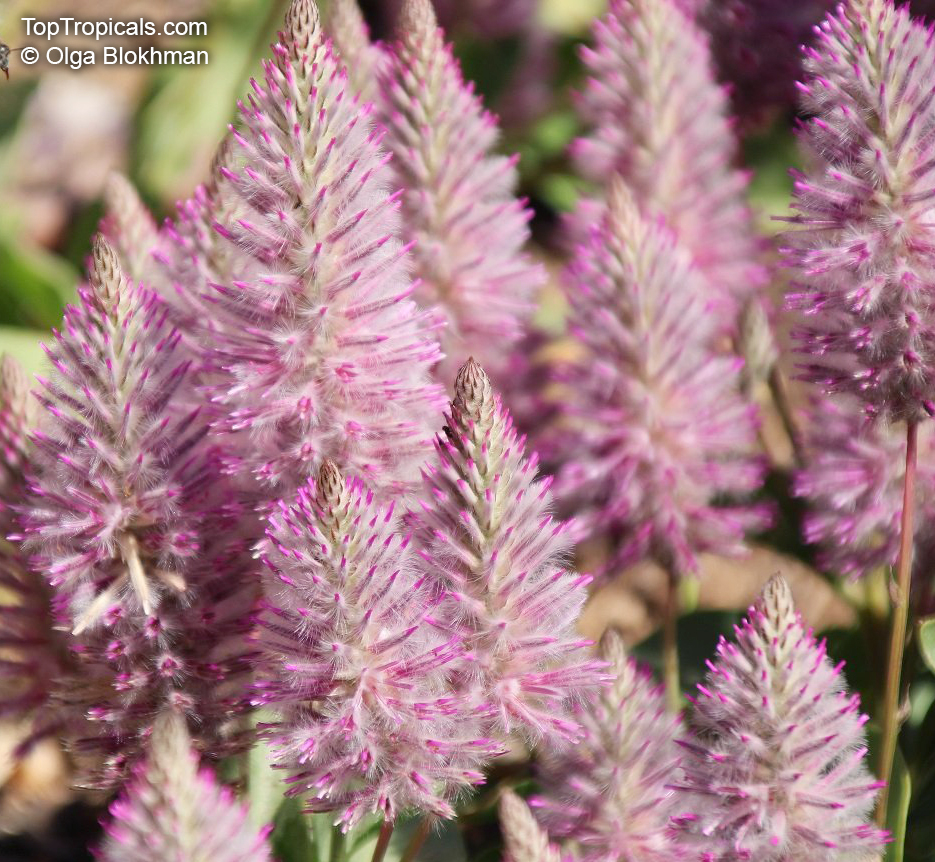Ptilotus exaltatus (Pink Mulla Mulla)
Top Tropicals Plant Encyclopedia
Botanical name: Ptilotus exaltatus
Common names: Pink Mulla Mulla, Lamb
Family: Amaranthaceae
Origin: Australia




Native to Australia, Ptilotus exaltatus is commonly known as the Pink Mulla Mulla and can comfortably thrive in USDA hardiness zones 9 through 11. It is a small shrub, usually growing to between two and five feet tall. As with Ptilotus exaltatus plants, full sun and regular, moderate waterings are needed to achieve maximum results from this flowering plant.
For its bloom, Ptilotus exaltatus produces bright pink flowers, borne on the conical shaped spikes that rise above the foliage on tall stems. The flowers are fleeting, lasting three to four weeks only, but densely populate the plant with color when blooming. The most active flowering season for this member of the Amaranthaceae family tends to be during the spring months.
Due to its inability to tolerate cold temperatures, Ptilotus exaltatus grows best when cultivated in a pot and moved indoors when temperatures dip lower than 30 degrees Fahrenheit. It is important to ensure the pot has good drainage, particularly in colder climates, as consistent moisture build-up can damage the plant's health. Before moving the plant indoors, the flower should be removed and if the temperature of the environment indoors exceeds 60 degrees Fahrenheit, the pot should also should be placed in partial shade to ensure the plant is provided with basic care, otherwise the plant growth may become stunted.
Apart from light, water and sheltered conditions, Ptilotus exaltatus has few special growing needs and can be treated like other low maintenance plants. After the flowers have faded, the plant may be trimmed to shape or to reduce its size and annual or bi-annual fertilizer to provide a boost of nutrients. Forceful pruning, however, must be avoided, as excessive removing of branches and leaves at once can be extremely damaging to the plant.
In conclusion, with the right environment, Ptilotus exaltatus requires very little in the way of maintenance and offers a pleasing display of bright pink flowers when in bloom. Discovered and named in Australia, this plant is easy to grow and can be quite hardy, withstanding deeply cold showers. Those who abide by the necessary care requirements can enjoy one of Australia natural beauties, grown in the comfort of their home.







